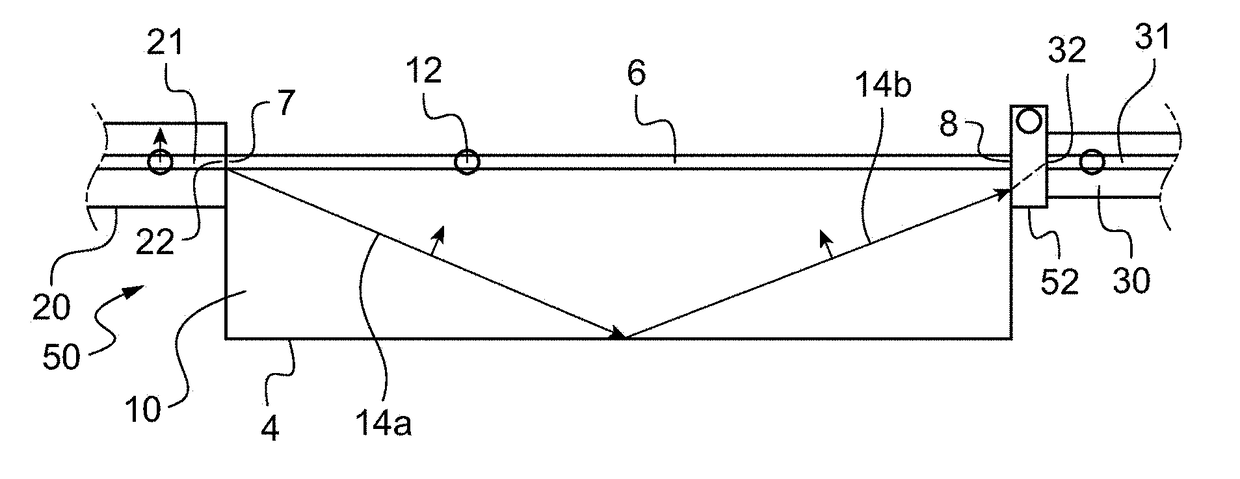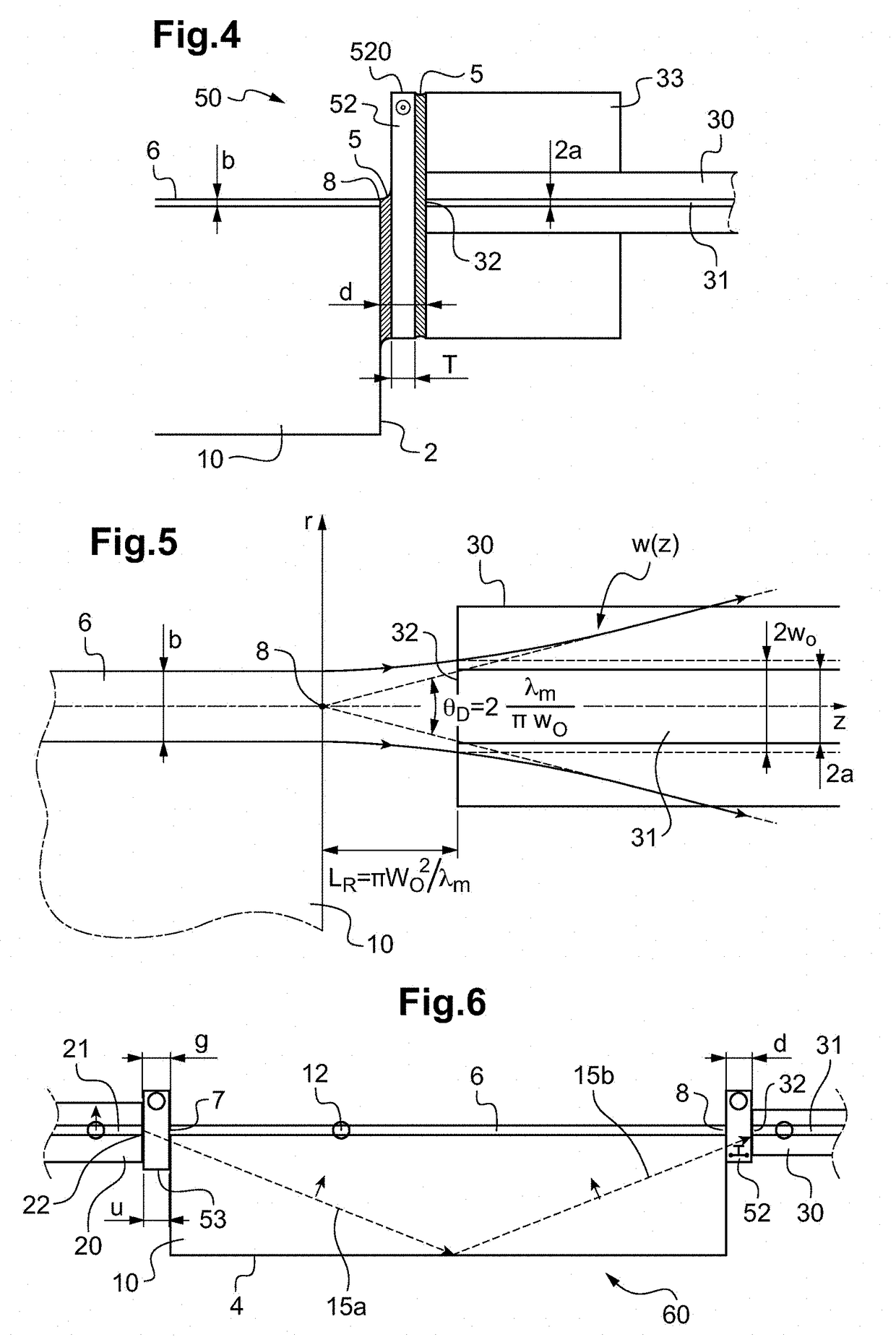Waveguide polarizing optical device
a waveguide and optical device technology, applied in the direction of polarising elements, optical fibres with polarisation, instruments, etc., can solve the problems of affecting the quality of signals transmitted in the waveguide affecting the operation of certain limitations of the optical devices on the integrated optical circuit, so as to achieve the better polarization rejection ratio and the polarization rejection ratio of at least one thin-plate polarizer
- Summary
- Abstract
- Description
- Claims
- Application Information
AI Technical Summary
Benefits of technology
Problems solved by technology
Method used
Image
Examples
first embodiment
[0056]FIG. 3 schematically shows a sectional view of a polarizing optical device according to the invention;
[0057]FIG. 4 schematically shows a sectional view of a detail of a polarizing optical device according to an embodiment of the invention;
[0058]FIG. 5 illustrates the divergence of a Gaussian beam at the output of a single-mode optical fiber;
second embodiment
[0059]FIG. 6 schematically shows a sectional view of a polarizing optical device according to the invention.
DEVICES
[0060]FIG. 3 proposes a polarizing optical device 50 comprising a first optical waveguide 20, a first waveguide polarizer 6, a second polarizer 52 and a second optical waveguide 30. The polarizing device 50 hence comprises a mounting of at least two polarizers in series in a particular configuration that allows attenuating the propagation of non-guided spurious beams without inducing noticeable losses.
[0061]A first waveguide polarizer 6 is chosen. Preferably, the first polarizer 6 is a waveguide polarizer integrated on the substrate 10 of an integrated optical circuit. Preferably, the first polarizer 6 is formed by proton exchange on a lithium niobate substrate. In another variant, the first polarizer 6 is a polarizing fiber.
[0062]An aspect of the invention consists in selecting a second polarizer 52 operating in transmission and having an ultra-thin thickness. Preferab...
PUM
 Login to View More
Login to View More Abstract
Description
Claims
Application Information
 Login to View More
Login to View More - R&D
- Intellectual Property
- Life Sciences
- Materials
- Tech Scout
- Unparalleled Data Quality
- Higher Quality Content
- 60% Fewer Hallucinations
Browse by: Latest US Patents, China's latest patents, Technical Efficacy Thesaurus, Application Domain, Technology Topic, Popular Technical Reports.
© 2025 PatSnap. All rights reserved.Legal|Privacy policy|Modern Slavery Act Transparency Statement|Sitemap|About US| Contact US: help@patsnap.com



